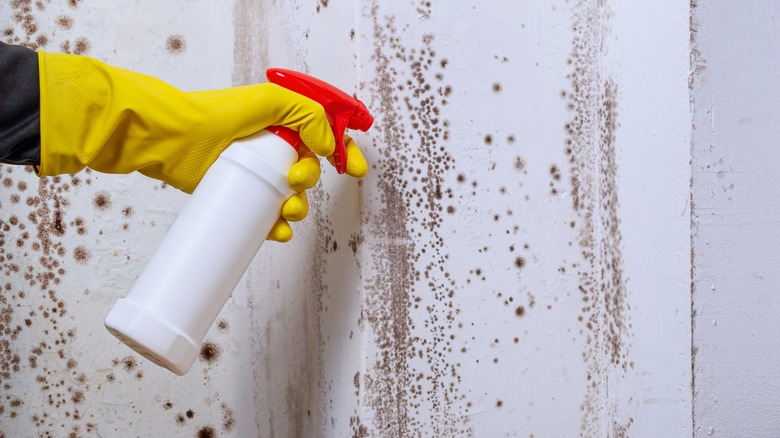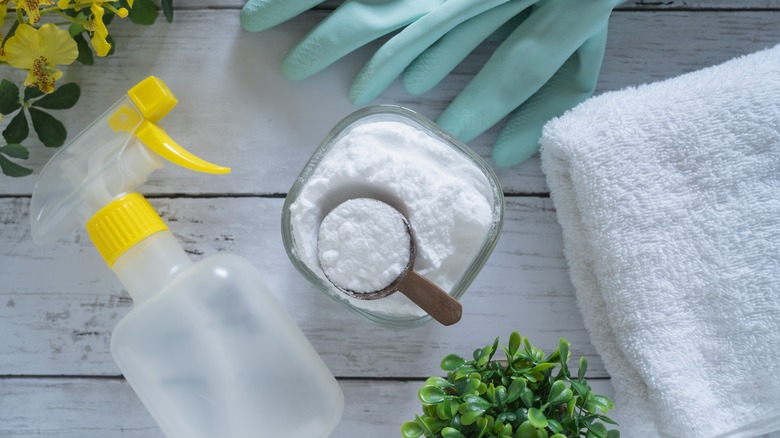Treat Mold Around The House Using An All-Natural Kitchen Staple
Outdoors, mold is a helpful part of the ecosystem, gradually breaking down dead plants and recycling the nutrients. But indoors, mold is an unsightly and potentially harmful nuisance. There are many species of mold in a rainbow of colors like pink, white, green, blue, and black. Black is often considered the most toxic of the household molds, but all forms need to be removed as soon as you spot them. Mold will continue to spread if not dealt with, and thrives in hot, wet environments like bathrooms, kitchens, and basements.
For minor outbreaks of mold inside the home, you may want to use a natural cleaner. This avoids adding toxic fumes on top of those being produced by the mold. Baking soda (also known as sodium bicarbonate) is an effective natural mold killer that you probably already own. Baking soda can be used to combat mold for many reasons.
First, baking soda's pH level is perfectly balanced to be deadly to mold, yet safe for surfaces (and any children or pets in your home). Second, it neutralizes odors and will eliminate the musty smell that accompanies mold. Third, baking soda is excellent for removing the stains mold leaves behind, and can even whiten the affected grout, tiles, or fabrics. Finally, it is a powerful desiccant, meaning it absorbs moisture (and no moisture means no mold). Placing an open box of baking soda in moisture-rich areas like the refrigerator or an under-sink cabinet can also help prevent mold growth.
How to remove mold with baking soda
To remove mold in your home, first you need to gear up. The Environmental Protection Agency recommends wearing gloves, goggles, and an N95 respirator mask to protect against airborne mold while cleaning.
Fill a spray bottle with water and add around a ¼ tablespoon of baking soda, then shake. Spray directly onto the mold, then scrub the mold away with a brush or scouring pad and rinse. Spray the area again with the baking soda mixture and allow to air dry. Rinse off any powdery residue and dry with a towel. To keep mold from returning, it is important to let the area air dry completely before introducing moisture back in, such as by taking a shower immediately afterwards.
Baking soda will not work effectively to kill mold on porous surfaces like ceiling tiles, drywall, or wood, which may require the use of chemicals. If you have persistent or large-scale mold growth in the home, please contact professional mold removers.

